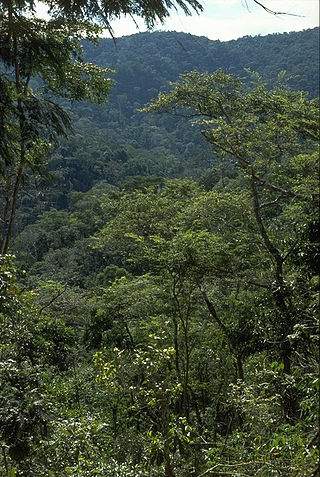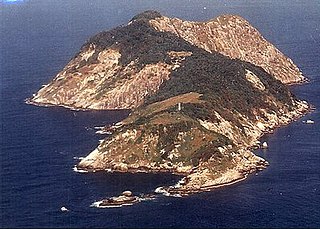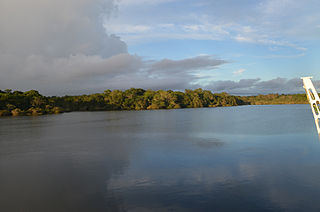
Protected areas of Brazil included various classes of area according to the National System of Nature Conservation Units (SNUC), a formal, unified system for federal, state and municipal parks created in 2000.

A private natural heritage reserve is a type of preservation area in Brazil. The land is owned privately and may be used for research, education, eco-tourism and recreation. However, this use must be compatible with the goals of preserving the environment and maintaining biodiversity. Although the private reserves have been criticized, they are a valuable complement to publicly owned reserves.

An area of relevant ecological interest is a type of protected area of Brazil with unusual natural features and with little or no human occupation.

A wildlife reserve is a type of sustainable use protected area of Brazil. As of 2016 no conservation units had been created in this category.
The Verde para Sempre Extractive Reserve is an extractive reserve in the state of Pará, Brazil. The reserve supports sustainable use of Amazon rainforest resources by the local population. Both before and after creation of the reserve there have been violent conflicts between different groups seeking access to the resources.

The Ituxi Extractive Reserve is an extractive reserve in the state of Amazonas, Brazil.
The Chapada Limpa Extractive Reserve is an extractive reserve in the state of Maranhão, Brazil.
The Médio Purus Extractive Reserve is an extractive reserve in the state of Amazonas, Brazil.
The Lago do Cuniã Extractive Reserve is an extractive reserve in the state of Rondônia, Brazil.
The Arapixi Extractive Reserve is an extractive reserve in the state of Amazonas, Brazil.
The Mocapajuba Marine Extractive Reserve is a coastal marine extractive reserve in the state of Pará, Brazil.

The Mãe Grande de Curuçá Extractive Reserve is a coastal marine extractive reserve in the state of Pará, Brazil.
The Cuinarana Marine Extractive Reserve is a coastal marine extractive reserve in the state of Pará, Brazil.
The Chocoaré - Mato Grosso Extractive Reserve (Portuguese: Reserva Extrativista Chocoaré - Mato Grosso is an extractive reserve in the state of Pará, Brazil.
The Gurupi-Piriá Marine Extractive Reserve is a coastal marine extractive reserve in the state of Pará, Brazil.

The Arraial do Cabo Marine Extractive Reserve is a coastal marine Extractive reserve in the state of Rio de Janeiro, Brazil.

The Tapajós-Arapiuns Extractive Reserve (Portuguese: Reserva Extrativista Tapajós-Arapiuns is an extractive reserve in the state of Pará, Brazil.
The Batoque Extractive Reserve is an extractive reserve in the state of Ceará, Brazil.
The Rio Unini Extractive Reserve is an extractive reserve in the state of Amazonas, Brazil.
The Rio Jutaí Extractive Reserve is an extractive reserve in the state of Amazonas, Brazil.









